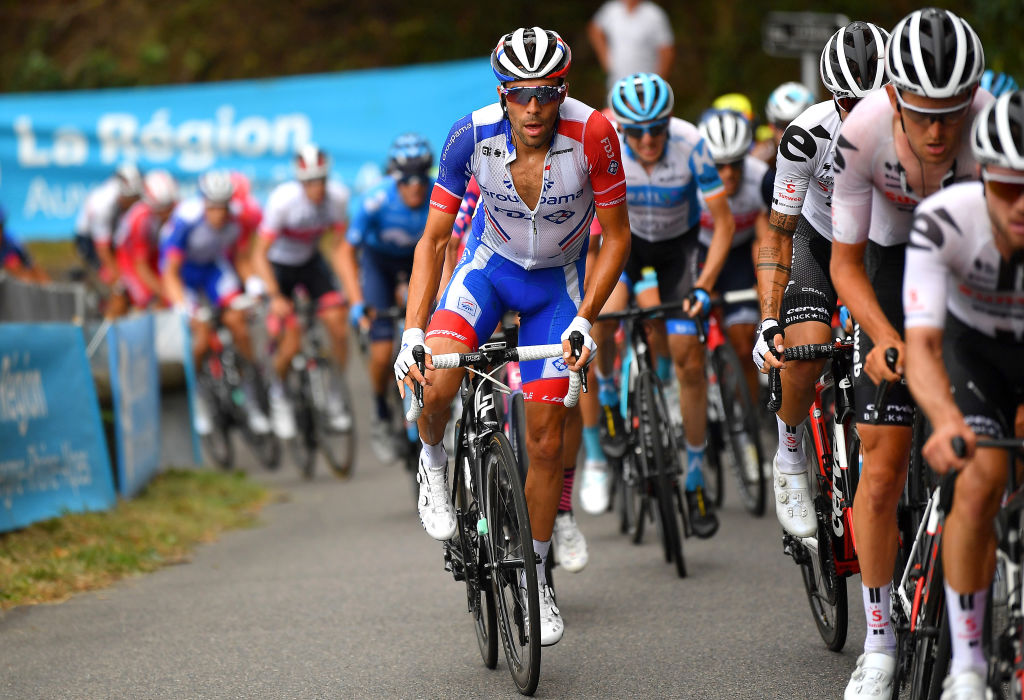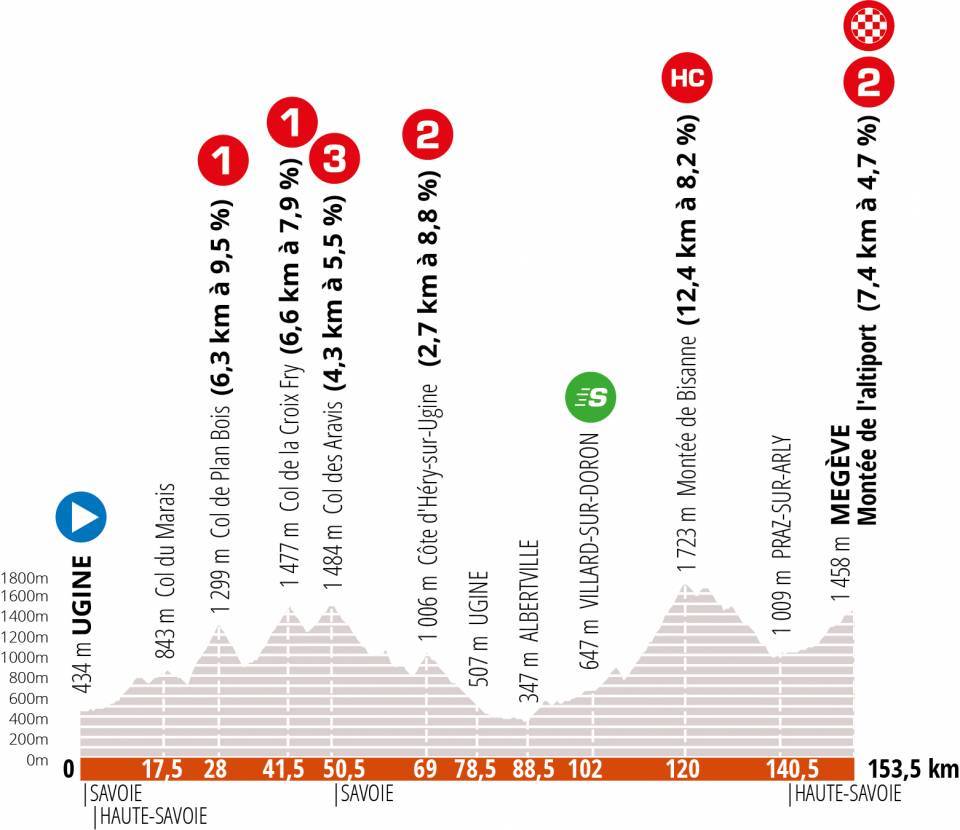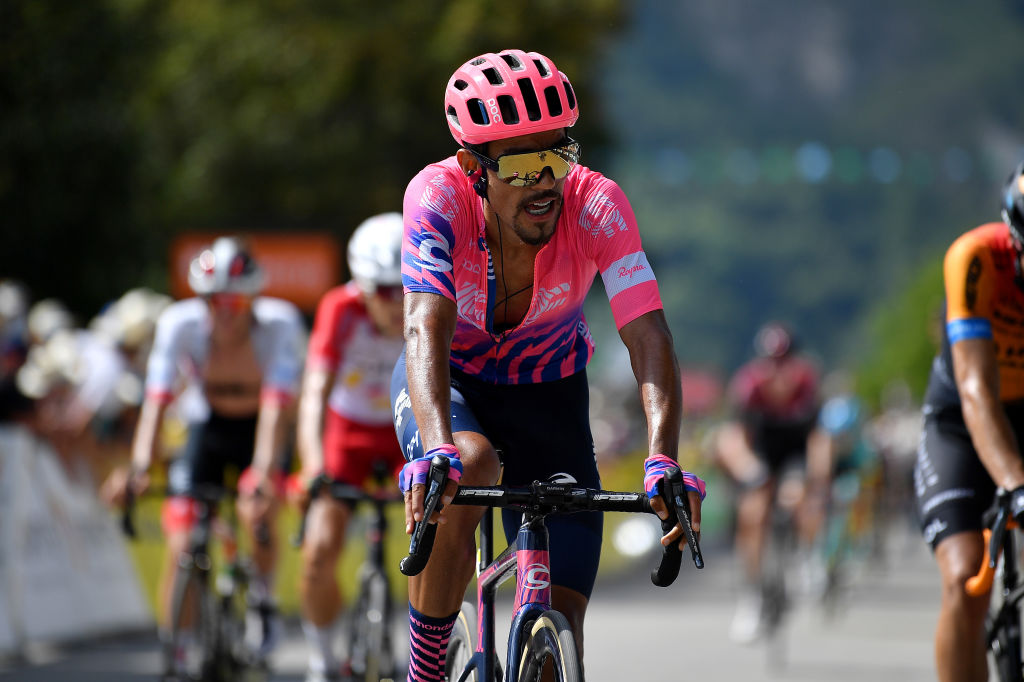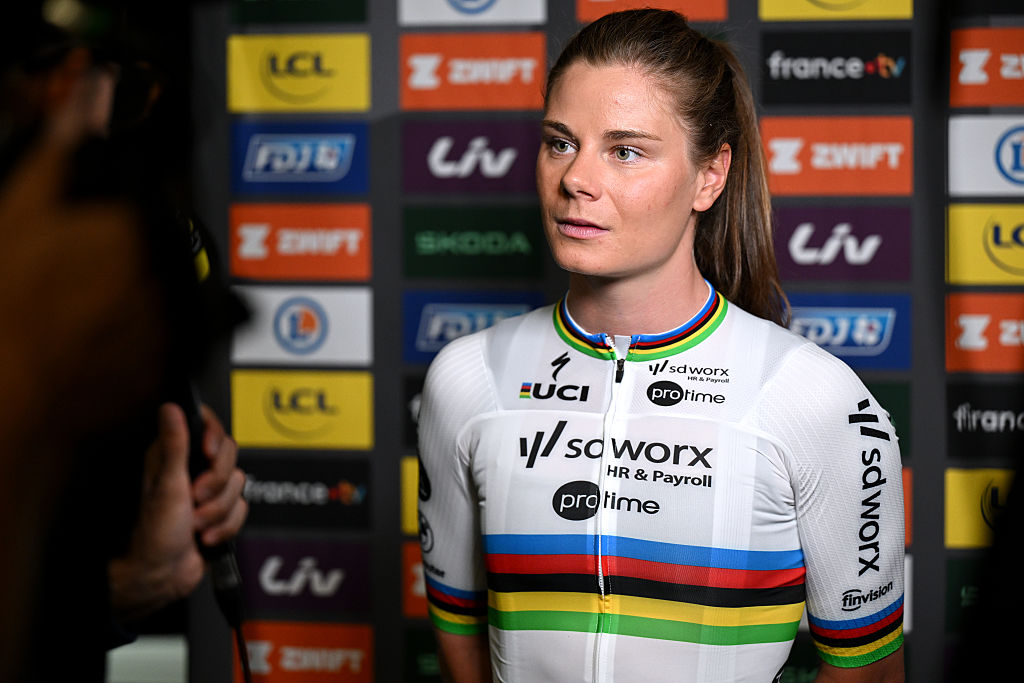Fortune could favour the bold in Dauphiné's weekend double-header
'There'll be people who'll want to risk everything to try and up-end the GC' says Pinot

The first two summit finishes of the Critérium du Dauphiné have yielded similar outcomes. A 'super-team' sets a strong tempo until the final kilometre, then Primoz Roglic skips away from everyone else.
On Friday’s stage 3, it wasn’t for the stage win, given Davide Formolo (UAE Team Emirates) was already celebrating a remarkable solo victory, but it told the same story as stage 2: the Slovenian of Jumbo-Visma is simply stronger than everyone else at this moment in time.
So far at this Dauphiné, he’s had the perfect platform to show it. Quite apart from being in extraordinary condition, Roglic is a rider who can time trial, climb, and sprint. In a one-climb ramp test, he’s always likely to surge clear of the pure climbers in sight of the line.
Just two stages remain in this truncated Dauphiné, and his rivals must surely look to ensure it doesn’t happen again if they’re seriously interested in that yellow jersey. This weekend’s stages both provide the opportunity for something different, and the danger of falling back into the same old dynamic.
Saturday’s stage 4 and Sunday’s final stage both finish on the same climb, the Montee de l’Altiport in Megeve. At 7.4 kilometres in length and an average gradient of 4.7 per cent, this stretch is a second-category climb and a much easier proposition than the first two summit finishes. If Roglic hits it with a couple of teammates by his side, it may be difficult to see his rivals doing any meaningful damage to his hold on the general classification.
Yet, while this final climb is less daunting than the previous days, the terrain beforehand is anything but, and that’s what could inspire the sort of racing that doesn’t lead to an uphill elimination race.
Thibaut Pinot (Groupama-FDJ) alluded to it in his comments in Saint-Martin-de-Belleville after stage 3, where he placed third on the stage and once again 'best of the rest' behind Roglic.
The latest race content, interviews, features, reviews and expert buying guides, direct to your inbox!
"Saturday and Sunday are two nice stages where the climbs are well designed," the Frenchman said. "I think there’ll be people who’ll want to risk everything to try and up-end the GC, who are going to try things. I think we’re in for an exciting weekend and, why not, some nice surprises."
A look at the climbs


The two stages are short – both exactly 153.5km in length to add to the symmetry – and feature multiple early and hard climbs ahead of the final haul up to the Altiport.
Saturday starts uphill from the gun, and takes in two first-category climbs – Col de Plan Bois and Col de la Croix Fry - inside the first 40km. It’s sure to be an explosive start, with no lack of interest in making a breakaway. GC teams may well look to position riders up the road to be used later on, and Roglic’s Jumbo-Visma lieutenants could have a real job on their hands policing who goes in there.
The Côte d’Héry-sur-Ugine interrupts a long downhill section, followed by a 30km slog through the valley, which may well end up deterring all-out warfare from early on. The hors-catégorie Montée de Bisanne (12.4km at 8.2 per cent), however, signifies a gruelling test and possible launchpad ahead of the descent and final climb.
Sunday’s stage contains no fewer than seven categorised climbs ahead of the final Altiport ascent. It could be another explosive start, with a descent from kilometre-zero leading to the short-but-steep Côte de Domancy. A flat 15 kilometres later are the hors-catégorie Col de Romme (8.8km at 8.9 per cent) and the first-category Col de la Colombière (7.5km at 8.5 per cent), separated by a sharp descent. After the descent to the half-way mark comes the tough Col des Aravis. An undulating section leads back to the Domancy, and then what is almost a 20km final climb, the Cote de Cordon and final Altiport climb separated only by a brief respite.
The first two true mountain stages each had a significant ascent ahead of the summit finish, but nothing on the same level of intensity we’ll see this weekend. As such, both summit finishes have so far ended up being what Guillaume Martin (Cofidis), fourth overall, described as a 'montée seche' - an abrupt one-off climb - as opposed to an ‘enchaînement de cols’ - a stringing together of mountains.
"It was a relatively weak gradient, with a relatively high tempo from Jumbo-Visma, so it was a scenario a bit like yesterday’s," Martin said at the finish of stage 3. "On the two stages to come, we have different profiles, with climbs from start to finish, so I think there’ll be more movement."
A look at the movers

The terrain is certainly fertile for Jumbo-Visma to be put under pressure, and Roglic potentially isolated early on. The big question is, who dares to move?
Roglic has been dominant but Jumbo-Visma haven’t been infallible. Robert Gesink has played no real part on the past two stages, while Tom Dumoulin and Steven Kruijswijk have seemed a bit short of the form of the other Tour contenders, with the caveat that they’ve spent time pulling the peloton. Sepp Kuss and Wout van Aert have been the stand-out riders and while the former will be tough to dislodge, the other teams surely can’t allow the latter to be in the picture in the valleys in the second half of this weekend’s stage.
More cracks appear in the Ineos armoury by the day, with more evidence that Chris Froome and Geraint Thomas are nowhere near the level of their competitors. Question marks are now over Bernal after he was distanced in the scrap for the line on Friday. Their domestiques impressed on Thursday, if not so much on Friday, but you sense it’s the top-order that really needs to step up to turn the tables.
Pinot looks strong in second on the GC. His lieutenant Sebastien Reichenbach has looked very impressive but he may rue the late withdrawal of David Gaudu, who could really help make things happen this weekend.
Emanuel Buchmann, third overall, has some decent support on Bora-Hansgrohe in Lennard Kamna, Felix Großschartner, and Gregor Muhlberger. Bahrain McLaren's Mikel Landa, who has ridden a quiet race in fifth, has top domestiques in Pello Bilbao and Damiano Caruso, although they haven’t fired so far this race.
Guillaume Martin, along with EF Pro’s Daniel Martinez (sixth overall) and Astana’s Miguel Angel Lopez (eighth), are likely to be more isolated, as are the riders from 11th to 13th: Richie Porte (Trek-Segafredo), Tadej Pogacar (UAE Team Emirates), and Romain Bardet (AG2R La Mondiale), but the latter two especially will prefer a more tactical, open race.
Perhaps the biggest clue was on the Madeleine on Friday, when Nairo Quintana’s Arkea-Samsic squad dictated the tempo. Aside from Jumbo-Visma, they’re the only team who have another rider within three minutes of Roglic, with Warren Barguil 16th at 2:30, a potential foil for ninth-placed Quintana.
The stage is certainly set for aggressive racing, but it does entail serious risks. Caution is never usually thrown to the wind at the Tour de France, but at the Dauphiné, in this unique edition of the race in this unique season as a whole, you never know.
Patrick is a freelance sports writer and editor. He’s an NCTJ-accredited journalist with a bachelor’s degree in modern languages (French and Spanish). Patrick worked full-time at Cyclingnews for eight years between 2015 and 2023, latterly as Deputy Editor.

